All issues

Predecessor
Volume 20, Issue 1
Displaying 1-7 of 7 articles from this issue
- |<
- <
- 1
- >
- >|
-
[in Japanese]1981Volume 20Issue 1 Pages 1
Published: February 24, 1981
Released on J-STAGE: March 19, 2010
JOURNAL FREE ACCESSDownload PDF (1802K) -
1981Volume 20Issue 1 Pages 2-3
Published: February 24, 1981
Released on J-STAGE: March 19, 2010
JOURNAL FREE ACCESSDownload PDF (2949K) -
Shunji MURAI, Ryuji MATSUOKA, Ryosuke SHIBASAKI1981Volume 20Issue 1 Pages 4-8
Published: February 24, 1981
Released on J-STAGE: March 19, 2010
JOURNAL FREE ACCESSLeast square method is a kind of statistical method based on probability, which is well applied to adjustment of random errors occurred in a multiple observation.
However, in actual observation, there often occurs such case in which a limited numer of observation with very few but large error are only made. In this case, the least square method gives a solution to distribute the influence of the large error uniformly to other points. This phenomenon results in the case, in which it is impossible to identify the point with large error.
On the other hand, least absolute value method gives a solution to minimize a sum of absolute value of residuals. This solution will be resulted from a majority of points with small error, regardless of large error. Therefore, because the residual of the point with large error will become apparently large, it is possible to identify the point with large error.
The study dealt with comparisons between least square method and least absolute value method, including comparisons of solutions, distribution of residuals and the influence of redundant observation by both methods. Experimental study was made for affine transformation in the two dimensional coordinate system.
From the result of the study, it can be said that least absolute value method is quite useful to identify the point with large error. However, a disadvantage of this method is to have to apply linear programming which used to need computing time.View full abstractDownload PDF (481K) -
Hiroshi YAMAMOTO, Yoshio MATSUMOTO1981Volume 20Issue 1 Pages 9-17
Published: February 24, 1981
Released on J-STAGE: March 19, 2010
JOURNAL FREE ACCESSA method of determining which aerial camera filter combination and which shutter and aperture settings to use to produce the required color-balance and exposure on aerial color infrared film is described.
The method is divided into three steps. The first step is the selection of an optimum image from a set of existing images. The second step is the estimation and the quantification of differences between the conditions under which the optimum image is produced and the conditions under which the aerial CIR photos are taken. The third step is the selection of a filter combination, shutter speed and F-no, to compensate for the differences.
To simplify the procedure, the required data can be read out from a group of figures and tables.
That the control method was able to produce the required image was verified by several practical tests.View full abstractDownload PDF (1002K) -
[in Japanese], [in Japanese], [in Japanese], [in Japanese]1981Volume 20Issue 1 Pages 18-21
Published: February 24, 1981
Released on J-STAGE: March 19, 2010
JOURNAL FREE ACCESSDownload PDF (1650K) -
1981Volume 20Issue 1 Pages 22-32
Published: February 24, 1981
Released on J-STAGE: March 19, 2010
JOURNAL FREE ACCESSDownload PDF (723K) -
[in Japanese]1981Volume 20Issue 1 Pages 33-34
Published: February 24, 1981
Released on J-STAGE: March 19, 2010
JOURNAL FREE ACCESSDownload PDF (274K)
- |<
- <
- 1
- >
- >|